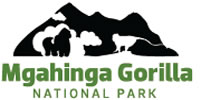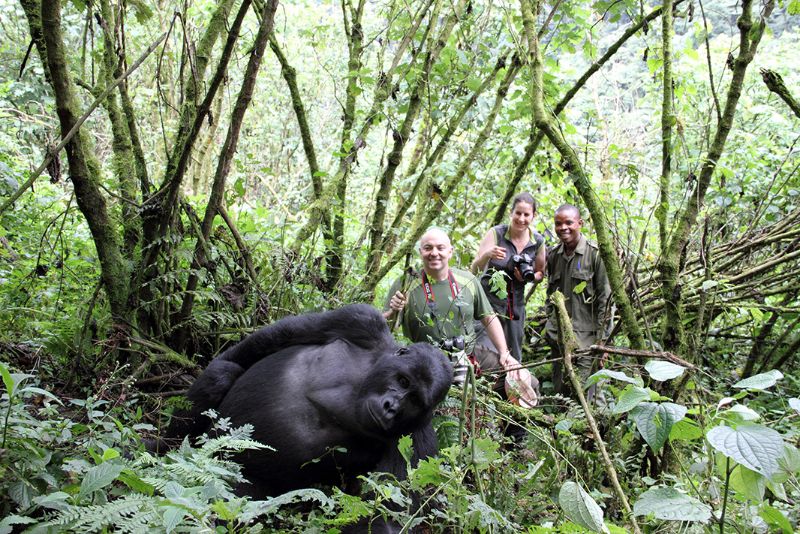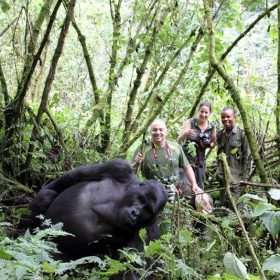Mountain gorillas are endangered species located in only three countries on the planet (Uganda, Rwanda and democratic republic of Congo). There are only about 900 mountain gorillas in those 3 three countries half of them residing in Uganda’s gorilla national parks of Bwindi impenetrable and Mgahinga.
Viewing these animals in the thick forests of the national parks offers remarkable and very sensitive experiences that one should have in any tourism destination.
Before going for the incredible gorilla trekking excursion, there are many things you should note and ensure for successful gorilla trekking expeditions. They include
Getting the Appropriate Accommodation Facility
This is very important mainly because gorilla families in Uganda live in different sectors in different parts of the national parks. The Buhoma sector is located in the northern part of Bwindi and has 3 gorilla families that include Rushegura family, Habinyanja family and Mubare family.
The Rushaga and Nkuringo sectors are located in the southern part of Bwindi with gorilla 5 gorilla families that include Mishaya, Nshongi, Kahungye, Busingye and Nkuringo families.
The Ruhija sector is located in the eastern part of Bwindi and has 3 gorilla families that include Kyaguriro, Oruzogo and Bitukura while Mgahinga national park has one family called Nyakagezi.
In all the sectors, there are accommodation facilities and therefore its better for one to sleep in a lodge or camp in the sector where he/she is going to trek from to avoid travelling long distances to get to the trekking starting points.
Those to trek gorillas in the Buhoma sector can sleep in Buhoma community rest camp, gorilla forest camp, Buhoma lodge, gorilla resort, mahogany springs, Engagi lodge, silverback lodge and many others.
Those to trek gorillas in the Ruhija sector van sleep at Ruhija community rest camp, Ruhija gorilla friends and campsite, cuckoo land lodge, Ruhija safari lodge and Ruhija gorilla mist camp. Those interesting in trekking gorillas in the Rushaga sector can sleep at gorilla safari lodge, Nshongi camp, wagtail eco safari camp and Nkuringo gorilla camp. The tourists trekking gorillas in Mgahinga national park can sleep at volcanoes mount Gahinga lodge.
Purchasing a Gorilla Permit
Gorilla permit purchasing should be done early enough mainly because only 104 gorilla permits are available a day. Only 8 tourists are allowed to trek a gorilla family in a single day and therefore delayed gorilla permit purchasing can lead to missing out.
Gorilla trekking permits can be purchased from Uganda wildlife authority offices in Kampala or through a trusted tour operator mainly those registered under the Association for Uganda Tour Operators (AUTO).
Getting Appropriate Clothes to Wear
Gorilla trekking in Uganda is done in the thick and rough forested areas of Bwindi and Mgahinga national parks and therefore tourists should wear long pants and long sleeved shirts or blouses. These should be quickly drying clothes and not white because white clothes could get stained in case you accidentally fall in one of the muddy trails in the forest.
A light rain coat and water proof trouser is also recommended because most times rainfall is unpredicted and can occur at any time of the day.
Strong hiking shoes or boots are a must to enable easy movement through the muddy areas and the gentle slopes of the mountains in the gorilla parks.
Keeping a Reasonable Distance when Facing the Gorillas.
This comes after minutes or hours of hiking through the thick forests. Meeting the gorillas is the most anticipated moment but however much you prepare for it, viewing them in their natural habitants leaves you touched and shocked. They live in families led by silverbacks that are always ready to fight any intruders therefore however much excited you may be, keep a reasonable distance to avoid any punch or drive down the rough trees by the gorillas.
They are very dangerous animals when disturbed and are capable of pulling down a fully-grown strong man. Tourists are just given an hour to see the gorillas and take photographs. Tourists are not allowed to use flash photography because the light can irritate the animals forcing them to attack. Tourists are also advised not to make a lot of noise, avoiding beating their chests and most importantly keeping a reasonable distance.


